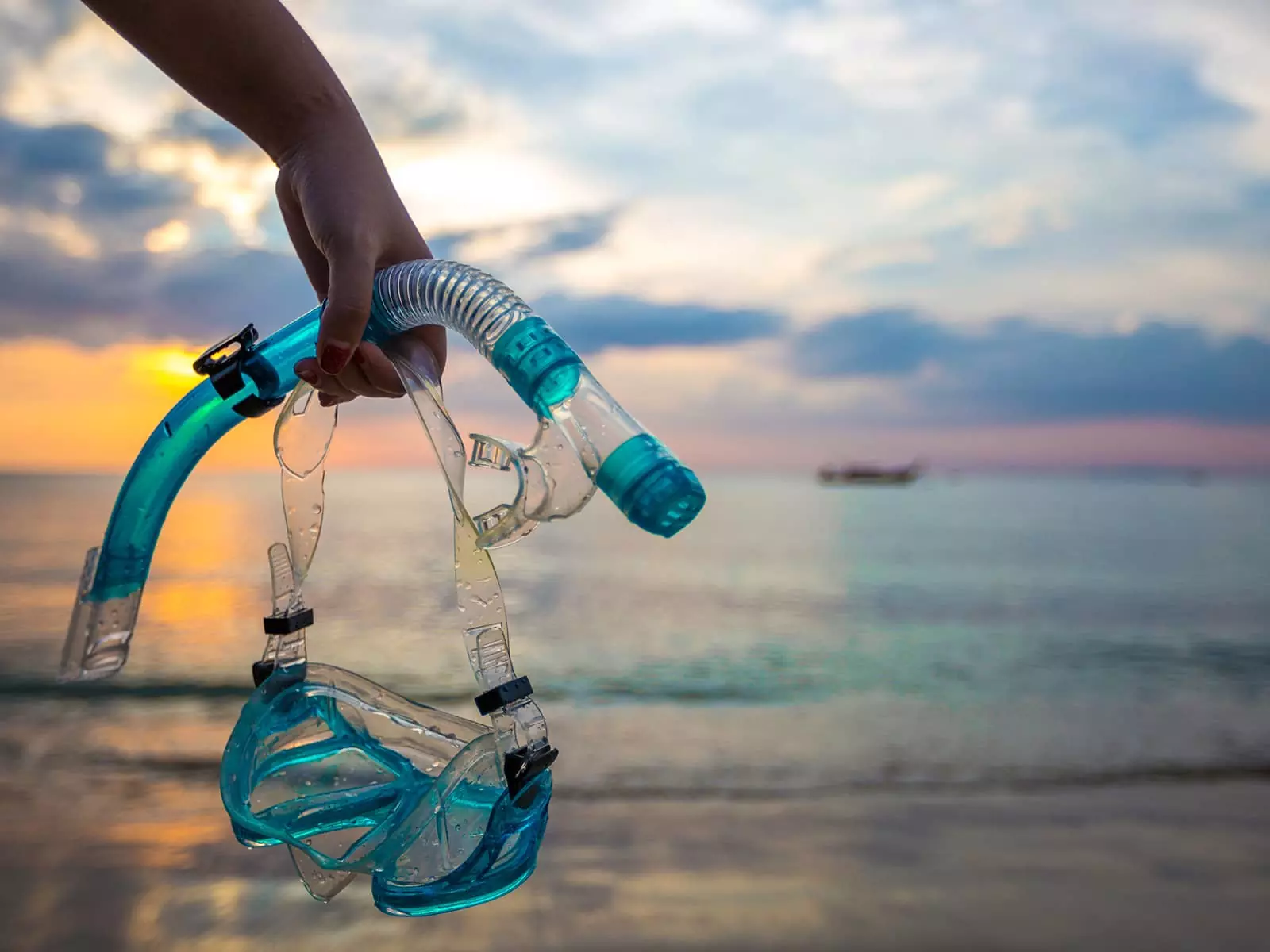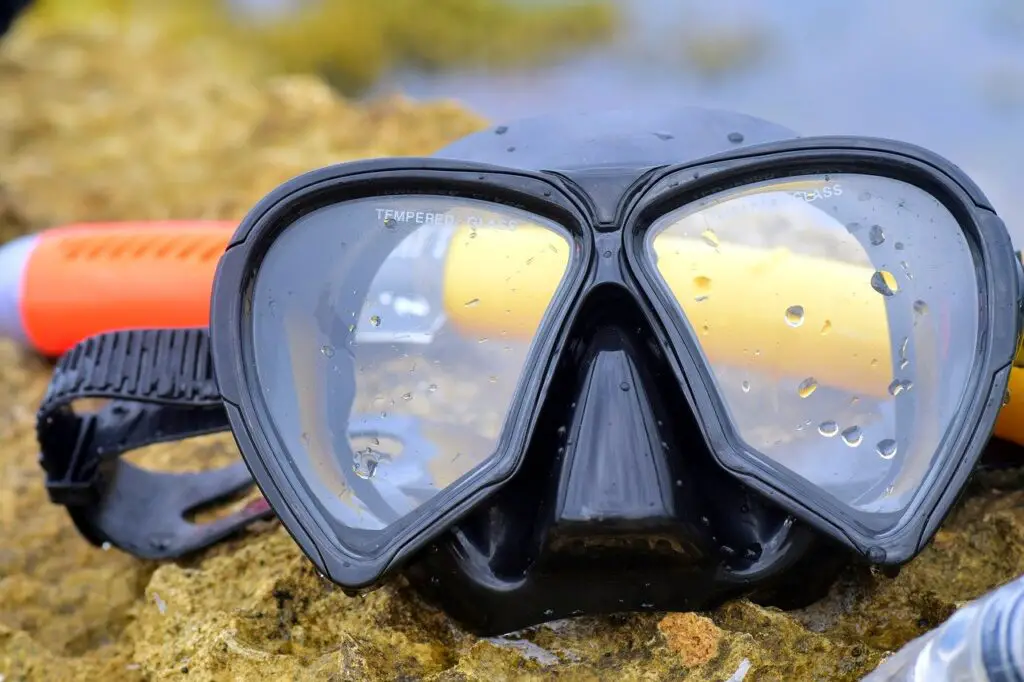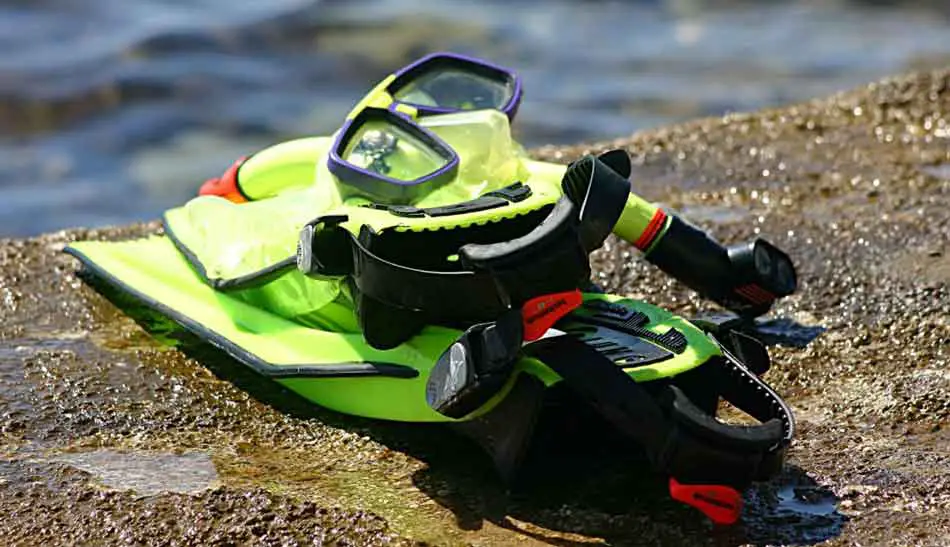How To Clean Snorkeling Equipment

Efficiently clean snorkeling gear for longevity and safety with our step-by-step guide to maintaining your underwater adventure equipment.
Introduction
How To Clean Snorkeling Equipment: Exploring the vibrant and mesmerizing underwater world while snorkeling is an experience like no other. The crystal-clear waters teeming with marine life offer an escape into a realm of tranquility and wonder. To ensure you have a safe and enjoyable underwater adventure every time, it’s crucial to maintain your snorkeling equipment properly. Clean gear not only enhances your comfort and safety but also prolongs the lifespan of your equipment.
We will delve into the cleaning methods for various components of your snorkeling gear, including the mask, snorkel, fins, and wetsuit. Additionally, we will discuss the importance of thorough rinsing, the proper storage of your equipment, and how to inspect for wear and tear.
By following our step-by-step instructions and adopting good cleaning habits, you can ensure that your snorkeling equipment remains in top condition, preventing potential issues such as foggy masks, malfunctioning snorkels, or damaged fins. So, let’s dive in and discover the secrets to maintaining your gear for countless unforgettable underwater adventures.

How is snorkel gear sanitized?
The mask and snorkels are placed in a large sink, where they are soaked in a mixture of dish soap and hospital grade sanitizer for one hour. They are then individually scrubbed by hand, rinsed and hung to dry before returning to the rack for rental. This ensures that all of the gear going out is safe and germ free.
Sanitizing snorkel gear is a vital step in ensuring the safety and hygiene of your equipment, particularly when sharing it with others or using rental gear. Proper sanitization not only eliminates harmful bacteria and contaminants but also prevents unpleasant odors and the growth of mold and mildew.
The most common method for sanitizing snorkel gear is to soak it in a solution of warm water and mild, non-abrasive detergent. This solution effectively breaks down oils, salt, and organic residues that can accumulate on your gear. It’s important to use a detergent that is safe for both your skin and the environment.
Here’s a simple process to sanitize your snorkel gear:
- Fill a large container or tub with warm water.
- Add a small amount of mild detergent to the water and mix it thoroughly.
- Submerge all components of your snorkel gear, including the mask, snorkel, fins, and mouthpiece, into the soapy water.
- Use a soft brush or cloth to gently scrub all surfaces, paying special attention to areas that come into contact with your face and mouth.
- Rinse each piece thoroughly with clean, fresh water to remove any detergent residue.
- Allow the gear to air dry completely in a shaded, well-ventilated area. Avoid direct sunlight, as it can degrade rubber components.
By following this sanitization process, you can ensure that your snorkel gear remains not only clean and hygienic but also safe for your next underwater adventure. Regularly sanitizing your gear contributes to a more enjoyable and worry-free snorkeling experience.
How do you disinfect a snorkel tube?
How to Clean a Snorkel Tube. This process is also pretty simple. You’ll want to follow the same procedure as the mask: warm water, soap, soak, hand scrub, rinse. Since you won’t be able to get inside the tube without a special tool, you can let it soak for a little longer or use water that is a little bit warmer.
Disinfecting a snorkel tube is crucial for maintaining hygiene and safety, especially when multiple people use the equipment or when renting gear. Disinfection helps eliminate harmful bacteria, viruses, and other potential contaminants, ensuring that the snorkel is safe for use. To disinfect a snorkel tube effectively, follow these steps:
- Preparation: Start by rinsing the snorkel thoroughly with fresh water to remove any visible debris, sand, or saltwater residue.
- Soaking: Fill a container or basin with a solution of warm water and an appropriate disinfectant. You can use a commercial snorkel or gear disinfectant, or you can create a solution with a mixture of water and a disinfecting agent like bleach or hydrogen peroxide.
- Immersing: Submerge the snorkel tube in the disinfectant solution, ensuring it’s completely covered.
By following these steps, you can disinfect your snorkel tube effectively, promoting safety and hygiene for both yourself and anyone else using the equipment. Regular maintenance and disinfection contribute to a worry-free and enjoyable underwater experience.
How do you clean and sanitize a snorkel mask?
How Do You Clean Snorkeling Gear?
- Rinse all of your equipment with fresh water.
- Soak your mask face-up in warm water with a silicone-based cleaning solution from a dive shop or mild dish soap.
- Thoroughly clean your snorkel with dish detergent and warm water to remove any debris.
Cleaning and sanitizing a snorkel mask is essential to ensure clear vision underwater and prevent fogging, especially when the mask comes into contact with your face and mouth. Proper maintenance also extends the life of your mask. Here’s how to clean and sanitize a snorkel mask:
- Rinse with Fresh Water: Immediately after your snorkeling session, rinse the mask thoroughly with fresh water. This removes saltwater, sand, and debris, preventing them from drying and potentially damaging the mask’s lenses and silicone skirt.
- Cleaning Solution: Prepare a solution of warm water and a mild, non-abrasive detergent. Avoid using harsh chemicals or abrasive materials that can scratch the lenses or damage the silicone.
- Cleaning: Use a soft brush or your fingertips to gently scrub the inside and outside of the mask’s lenses, as well as the silicone skirt. Pay extra attention to areas that may have trapped residue or oils from your skin.
- Rinse Thoroughly: After cleaning, rinse the mask again with fresh water to remove any soap residue.
- Disinfection: To sanitize the mask, you can use a commercial snorkel gear disinfectant or create a mild bleach solution by diluting one part bleach with ten parts water. Submerge the mask in the disinfectant for a few minutes, then rinse it thoroughly with fresh water.
Regularly cleaning and sanitizing your snorkel mask not only ensures its longevity but also guarantees a clear, fog-free view of the underwater wonders on your next snorkeling adventure.
How do you sanitize a snorkel mouthpiece?
There are two routes that you can go with cleaning the mouthpiece: You can either choose to use soap and water, or you can choose to use diluted detergent. If your snorkel’s manufacturer has explicitly stated that detergent is not safe to use on the snorkel or it’s mouthpiece, then you should stick with soap and water.
Sanitizing a snorkel mouthpiece is essential to ensure a safe and hygienic underwater experience. The process is relatively simple and can be done using readily available materials. Start by rinsing the snorkel mouthpiece thoroughly with fresh water immediately after use to remove any saltwater or debris. This initial rinse helps prevent the buildup of residue.
Next, prepare a sanitizing solution. You can use a mixture of warm water and mild dish soap, or opt for a specialized snorkel mouthpiece cleaner. Submerge the mouthpiece in the solution and use a soft brush or a dedicated cleaning tool to gently scrub the inside and outside surfaces. Pay extra attention to the areas where saliva and moisture tend to accumulate.
After scrubbing, rinse the mouthpiece again with clean, fresh water to remove any soap or cleaner residue. Ensure there is no lingering taste or odor from the sanitizer.
To further disinfect the mouthpiece, you can soak it in a solution of one part white vinegar and three parts water for a few minutes. Vinegar is an effective natural disinfectant. Rinse it thoroughly once more with water to eliminate any vinegar smell.
Finally, allow the snorkel mouthpiece to air dry completely before storing it in a clean, dry place, away from direct sunlight. Regularly sanitizing your snorkel mouthpiece will help maintain its longevity and keep it safe for your next underwater adventure.
What happens if water gets into your snorkel?
If you get water in your snorkel, hold your breath and submerge the end of the snorkel by putting your head below the water. Water entering the snorkel barrel can be blasted clear after you surface and quickly exhale through your mouth. Any excess water can be expelled with a second forceful exhalation.
When water enters your snorkel while you’re snorkeling, it can be an unexpected and somewhat uncomfortable experience, but it’s a common occurrence that can easily be managed. When water enters the snorkel, there are a few things that typically happen:
- Gurgling and Spluttering: As water enters the snorkel tube, you might hear a gurgling sound, and you might splutter or cough as you try to clear the water from your mouth.
- Discomfort: The sensation of water in your snorkel can be uncomfortable and momentarily disrupt your breathing pattern. However, it’s usually not a cause for alarm.
- Breathing Difficulties: If a significant amount of water enters the snorkel, it can temporarily impede your ability to breathe through the tube.
To deal with water in your snorkel, follow these steps:
- Stay Calm: Don’t panic. It’s a common occurrence, and it’s manageable.
- Lift Your Head: Tilt your head upward to bring the snorkel out of the water. This allows gravity to help drain the water from the tube.
- Exhale Forcefully: Blow forcefully into the snorkel to clear any remaining water. This can be done both above and below the water surface.
- Resume Snorkeling: Once the water is cleared, you can continue snorkeling as usual.
To minimize the chances of water entering your snorkel, choose a snorkel with a splash guard or a purge valve, which can help prevent water from entering the tube. Additionally, practice proper snorkel techniques, such as keeping your snorkel tube above the water when you can and maintaining a relaxed breathing rhythm.
Can I use any soap to clean my snorkeling equipment?
Using any soap to clean your snorkeling equipment may not be the best idea. While it’s important to keep your gear clean to ensure a safe and enjoyable underwater experience, not all soaps are suitable for this purpose.
Ideally, you should use a mild, non-toxic, and biodegradable soap specifically designed for cleaning diving and snorkeling equipment. These specialized soaps are formulated to remove salt, sand, and other contaminants without harming the delicate materials of your gear, such as silicone, rubber, and neoprene. Using harsh or abrasive soaps can lead to deterioration, loss of flexibility, or even the breakdown of critical components over time.
Additionally, eco-friendly, biodegradable soaps are essential, as they minimize harm to aquatic ecosystems when washed off into the ocean during rinsing. This helps protect the very environment you’re exploring while snorkeling.
Regularly cleaning and properly storing your gear not only extends its lifespan but also ensures your safety and comfort while exploring the underwater world. So, while any soap might technically clean your equipment, it’s best to invest in the right tools to protect your gear and the environment.
How often should I clean my snorkeling gear?
Cleaning your snorkeling gear is essential to ensure its longevity and your safety while exploring the underwater world. The frequency of cleaning depends on several factors:
- After Each Use: It’s a good practice to rinse your snorkeling gear with freshwater after every use. This removes saltwater, sand, and other debris that can corrode or damage your equipment.
- Regular Maintenance: Beyond rinsing, a more thorough cleaning should be done every few uses or at least once a month if you snorkel frequently. This involves using a mild, non-toxic, and biodegradable soap to clean the mask, snorkel, and fins, both inside and out. Pay special attention to any crevices or seals where saltwater or sand might accumulate.
- Storage: Proper storage also plays a significant role. Store your gear in a cool, dry place away from direct sunlight, as exposure to UV rays can degrade materials over time. Ensure your gear is completely dry before storing it to prevent mold or mildew growth.
- Inspect Regularly: Periodically inspect your gear for signs of wear and tear, such as loose straps, cracked masks, or damaged snorkels. Address any issues promptly to maintain the safety and functionality of your equipment.
While rinsing after each use is a must, a more thorough cleaning every few uses or monthly is advisable. Regular maintenance and proper storage will extend the lifespan of your snorkeling gear, ensuring it serves you well for many underwater adventures to come.
Any additional tips for maintaining snorkeling equipment?
To ensure the longevity and performance of your snorkeling equipment, there are several additional tips beyond basic care that can help keep your gear in top shape. Firstly, after each use, rinse your snorkel, mask, and fins thoroughly with fresh water. This step is crucial to remove saltwater, sand, and debris that can corrode or damage the equipment over time.
Secondly, store your snorkeling gear in a cool, dry place away from direct sunlight. Prolonged exposure to sunlight and extreme heat can cause materials like silicone and rubber to degrade. Ideally, use a dedicated storage bag or container to protect your gear from dust and potential damage.
Regularly inspect your equipment for signs of wear and tear, such as cracked or worn-out straps, loose buckles, or torn silicone. Address any issues promptly by replacing or repairing damaged parts to ensure safety while snorkeling.
Lastly, avoid placing heavy objects on top of your gear when storing it, as this can cause deformation or breakage. Properly maintaining your snorkeling equipment not only extends its lifespan but also enhances your underwater adventures by ensuring comfort and functionality. By following these additional tips, you can enjoy countless snorkeling excursions with gear that’s in excellent condition.

Conclusion
In the world of snorkeling, a well-maintained and clean set of equipment can make all the difference between an ordinary underwater excursion and an extraordinary one. We’ve explored the ins and outs of how to clean snorkeling equipment, and by now, you’re well-equipped with the knowledge and techniques to keep your gear in prime condition.
Regularly cleaning and caring for your snorkeling equipment is not only a matter of convenience but also a crucial safety measure. Properly cleaned and stored gear minimizes the risk of foggy masks, leaking snorkels, and uncomfortable fins. It ensures that every dive is a smooth and enjoyable experience, allowing you to focus on the mesmerizing underwater world rather than equipment malfunctions.
Remember to rinse your gear thoroughly with fresh water after each use, pay special attention to the mask’s lenses to prevent fogging, and store your equipment away from direct sunlight and extreme temperatures. Periodically inspect your gear for signs of wear and tear, and address any issues promptly to prolong its lifespan.
By following these cleaning and maintenance guidelines, you’re not only preserving your investment but also ensuring that your snorkeling adventures remain safe, comfortable, and filled with awe-inspiring moments beneath the waves. So, gear up, dive in, and continue exploring the wondrous underwater realms with confidence and clarity.



